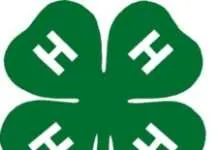Can first impressions lead to changes in communities? Yes, based on the experience of one rural community that used the First Impressions program as a springboard for strategic actions to make community improvements.
Gary Olson is an entrepreneur, farmer, and real estate broker in Gypsum, Kansas. He grew up on a nearby farm and now produces seed wheat and has a real estate company. He’s also seen the struggles of rural communities. “Our town had about died,” Gary said.
In January 2019, he bought a building in downtown Gypsum and revitalized the flea market which had been operating there as a place for vendors to sell various products. Some are original custom products, such as from a nearby welding shop. Others are used or repurposed products that can be purchased affordably. People can sell items on consignment or donate them. “Our customers say they find hidden treasures here,” Gary said.
Resa Risinger is now the flea market manager. She noted that the market offered special promotions during the holidays such as a drawing for a free turkey and three hams.
“(The market) has grown exponentially,” Gary said. Promoting it on social media and allowing credit- and debit-card purchases has made a big difference. “Sales went through the roof,” Gary said. “Our guest book says that we’ve had visitors from as far away as California and Michigan and Sydney, Australia.”
Through another Gypsum resident, Leslie Manning, Gary learned about the First Impressions community-betterment program. First Impressions is offered to communities at no cost by K-State Research and Extension.
The purpose of the program is to build awareness of a community’s strengths as well as areas of concern, using feedback from outside the community. Once a community chooses to participate, a team of trained volunteers from a similar town will visit the community and record its impressions of various community elements, such as:
• Residential locations.
• Retail businesses.
• Industrial areas.
• Local government entities.
• Schools.
• Other points of interest.
The results are presented at a community meeting.
Gary Olson and Leslie Manning were among those who went to a presentation to learn about the First Impressions program. They helped encourage the city of Gypsum to participate in the program. “A team from Glasco came down and gave us feedback,” Gary said.
Such outside perspectives can be useful in seeing one’s community through the eyes of a first-time visitor. In the case of Gypsum, this led to community action. “The next logical step was a program called Strategic Doing,” Gary said. “The extension office helped us organize a brainstorming meeting.” Facilitator Betty Johnson helped the community organize task forces to work on top priority issues, such as youth development, parks and recreation, and senior housing.
One prominent project was a new “Welcome to Gypsum” sign. “That sign was in the works for several years. Sandy Kruse worked on it,” Gary said.
New owners have purchased the restaurant, and other new businesses have opened. “We’ve opened a business center at the flea market,” Gary said. Strategic Doing has also led to the creation of the Gypsum Valley Community Foundation Fund, which has already raised more than $20,000.
“We’ve come a really, really long way,” Gary said. “Without those two programs (First Impressions and Strategic Doing), we wouldn’t have the community we do.”
It’s great to see such progress in a rural community such as Gypsum, population 405 people. Now, that’s rural.
For more information, search for @gypsumfleamarketandthrift on Facebook.
Can first impressions lead to community action? In the case of Gypsum, yes. Those first impressions from outside the community helped identify key needs that led to not just community strategic planning, but strategic doing.
We commend Gary Olson, Resa Risinger, Leslie Manning, Sandy Kruse, and the many other volunteers who are making a difference by building business and bettering the community. They are making an excellent impression.
And there’s more. Remember the welding company that made and sold the custom items? That small-town shop has big capabilities. We’ll learn about that next week.
Audio and text files of Kansas Profiles are available at http://www.kansasprofile.com. For more information about the Huck Boyd Institute, interested persons can visit http://www.huckboydinstitute.org.
FOR PRINT PUBLICATIONS: Links usedin this story
Gypsum flea market and thrift on Facebook, https://www.facebook.com/gypsumfleamarketandthrift
The mission of the Huck Boyd National Institute for Rural Development is to enhance rural development by helping rural people help themselves. The Kansas Profile radio series and columns are produced with assistance from the K-State Research and Extension Department of Communications News Media Services unit. A photo of Ron Wilson is available at http://www.ksre.ksu.edu/news/sty/RonWilson.htm. Audio and text files of Kansas Profiles are available at http://www.kansasprofile.com. For more information about the Huck Boyd Institute, interested persons can visit http://www.huckboydinstitute.org.
K State Research and Extension is a short name for the Kansas State University Agricultural Experiment Station and Cooperative Extension Service, a program designed to generate and distribute useful knowledge for the well being of Kansans. Supported by county, state, federal and private funds, the program has county extension offices, experiment fields, area extension offices and regional research centers statewide. Its headquarters is on the K State campus in Manhattan. For more information, visit www.ksre.ksu.edu
Column by:
Ron Wilson
[email protected]
785-532-7690





